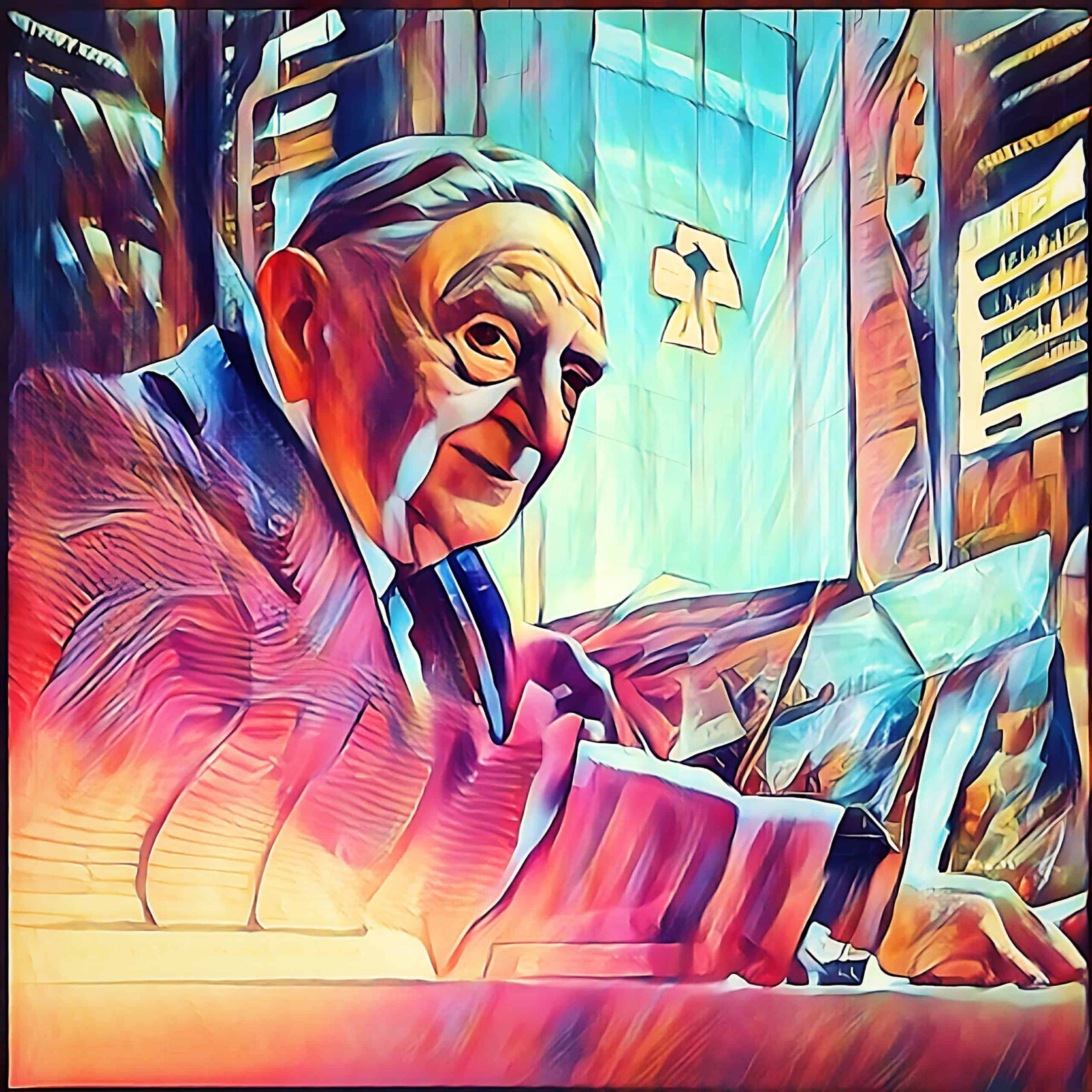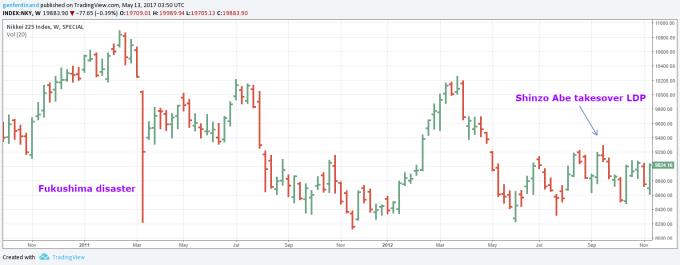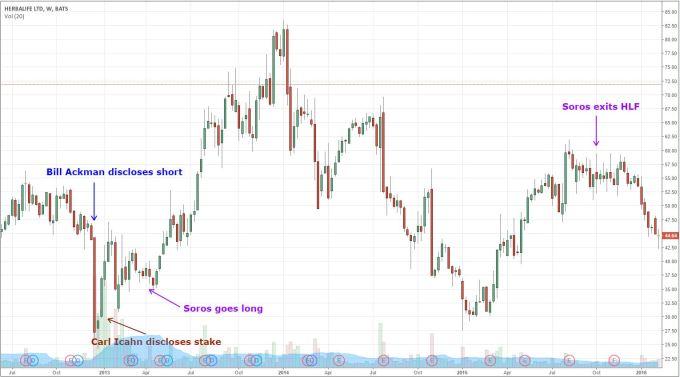George Soros is a billionaire investor and philanthropist who is known for his active management style and use of financial derivatives. He is often referred to as “the man who broke the Bank of England” due to his successful bet against the British pound in 1992.
Soros’ investment strategy involves identifying and profiting from macroeconomic trends and global events, such as currency fluctuations and political developments. He also uses a variety of investment vehicles, including hedge funds and private equity to implement his ideas.
One of the things that makes George Soros a market legend is his uncanny ability to find lucrative trades.
Let’s take a look at how Goerge Soros trading strategy helped him do it.
What is George Soros’ Strategy?
In John Train’s Money Masters Of Our Time, Jim Rogers, an ex-colleague of Soros, explained their process:
We aren’t as much interested in what a company is going to earn next quarter, or what 1975 aluminium shipments are going to be, as we are in how broad social, economic, and political factors will alter the destiny of an industry or stock group for some time to come. If there is a wide difference between what we see and the market price of a stock, all the better, because then we can make money.
Stanley Druckenmiller, Soros’ right hand man during Quantum’s epic performance, outlines this concept further:
[My] job for 30 years was to anticipate changes in the economic trends that were not expected by others, and, therefore not yet reflected in security prices.
Too many investors look at the present; the present is already in the price. You’ve got to think out of the box and visualise 18 to 24 months from now what the world is going to be and what (level) securities might trade at… what a company has been earning doesn’t mean anything, what you’ve got to look at is what people think a company’s going to earn and if you can see something in 2 years that’s going to be entirely different than the conventional wisdom, that’s how you make money.
When Did George Soros Start Trading?
Soros’ Japanese trade in 2012 and 2013 is the best modern example of the master riding a forward looking idea to enormous gains.
After the 2011 Fukushima disaster, foreign investors fled Japanese financial assets. Pessimism surrounding the struggling economy was extremely high.
There were talks of a “nuclear holocaust” as people became concerned about a radiation fallout. And the Eurozone’s sovereign debt crisis (happening at the same time) didn’t help either.
Together they fueled risk aversion across global financial markets, causing the Japanese Yen to strengthen relative to other currencies.
The stronger JPY caused Japanese exporters to earn less after currency translation, which meant their stock prices struggled as well.
For nearly a year after the Fukushima disaster sent prices tumbling lower, the market did next to nothing. Valuations were cheap and depressed.
No one was interested in Japan. Investors were convinced the country would continue its decades-long battle with deflation.
With all this negative sentiment, the market completely overlooked Shinzo Abe taking leadership of the LDP in September 2012…
How Did George Soros Make His Money?
Forbes reported that Soros was actively participating in the Japanese equity markets while being short their currency as early as October 2012.
Abe-san only assumed the role of Prime Minister in December, meaning Soros’ firm was early in anticipating the “Abe” variable’s potential effect on Japan’s asset markets. He was positioned before reality materialised.
Anticipating how variables (that the majority aren’t thinking about) could change current security pricing is the hallmark of a successful speculator.
We all know what happened after that.
PM Abe pushed for his promise of “ending deflation’” and the Bank of Japan (BOJ) launched its aggressive monetary easing program in April 2013.
The JPY got crushed and Japanese equities took off.
An investor using either traditional valuation metrics or plain old technicals would likely have been reluctant to foray into Japan before Abe-san was elected (there would be no buy signal according to their framework). But Soros was able to stay ahead of the crowd and capitalise when the unexpected situation materialised.
This is macro investing on a higher level. Learn to anticipate!
Soros on the 3 Realities
Soros once said there are 3 realities:
- Things that are true
- Things that are untrue
- And things that are reflexive
He believes we need to differentiate our circumstances to understand these 3 types of realities. In particular, he emphasizes defining false trends — which occur when a belief is founded on false assumptions, but many believe it.
Since there’s nothing in financial markets that can be determined for sure (with 100% confidence), false trends and reflexive realities are prevalent.
According to Soros, false trends can be so dominant, that they move financial markets, causing a cascading effect on asset prices and secondary effects that reinforce the initial false beliefs. This reflexiveness creates a false reality, which is exactly how bubbles form.
Soros believes you can make money from these trends, even when you know they’re false. Doing so requires establishing positions at appropriate times while maintaining objectivity and flexibility. And of course, sticking to your risk management plan is key.
The steps to exploit a false trend are:
- Analyze assumptions to determine if they’re true or not
- Identify false trends based on those assumptions
- Evaluate how feedback loops form and affect the fundamental reality
Don’t strive for an ideal or perfect explanation in the markets. Be sober, analytical, and pragmatic. Seek to invert your thinking and understand all possible viewpoints.
Big questions of our time like ‘Is China imploding?’ or ‘Are cryptocurrencies the future?’ are issues that fall into these realities. Whether they’re true or not doesn’t matter to the master speculator. What matters is whether you can exploit them to profit!
Look For “Experimental Economics”
George Soros is constantly on the lookout for financial situations where there’s a “great amount of experimenting”.
Experimenting with complex systems like economies generally leads to imbalances and unintended consequences. Soros loves to exploit these. As he once said, “the accumulated drawbacks of specific imposed economic models simply provide a playground for financial market speculators”.
Is there a government meddling with the free market (capital controls and such)?
Is there a central bank, for whatever illogical reason, pegging its currency?
These are circumstances that pique Soros’ interest. He’s ruthlessly speculated in many of these situations during his career. The most famous example is his bet against the Bank of England in 1992.
There was also another situation in the 1990s where Soros observed that the boom in Asian economies would reverse and come crashing down if liquidity conditions changed.
The stage was set as most Asian economies had their debt denominated in hard currencies like the US Dollar, while they booked their revenues in their own local currencies. Additionally, many Asian central banks maintained a peg to the greenback to help them tap into international debt financing.
This was a classic reflexive scenario where a strengthening USD would cause severe economic contractions throughout emerging Asian economies. A stronger dollar would also lead to an even stronger dollar as the situation reinforced itself, trouncing the Asian economies.
This eventually forced Asian central banks to break their dollar peg after finally being overwhelmed. Soros positioned himself in several markets like Thailand, profiting from the 1997 crisis.
Macro dislocations, far-from-equilibrium situations, politicians meddling with free market affairs… these are all playgrounds for the macro speculator. Look around you — is there any ‘experimental economics’ going on?
Fade Extreme Investor Positioning
In December 2012, activist investor Bill Ackman went public in his crusade against Herbalife (HLF). He was shorting the company’s stock while accusing it of conducting a huge pyramid scheme.
Ackman’s war against Herbalife also sparked “billionaire battles” as other well-known Wall Street tycoons took sides. The most prominent of them all was Carl Icahn, who went long HLF and publicly sparred against Ackman, debating his claims.
It was reported that Soros went long HLF sometime in the second quarter of 2013, which spurred a rally in the stock price. About 2 years later, Soros fully exited his long position during the third quarter of 2015.
Soros slipped in and out of the stock while Ackman and Icahn were playing tug-of-war over who was right…
We don’t know who’ll eventually be right, but we do know that Soros profited during that tug-of-war. Regardless of his fundamental view, market sentiment and positioning gave Soros the opportunity to profit off a gigantic short squeeze.
Look for popular trades or overcrowded positions. You may agree with the consensus view, but if most participants are positioned that way, you may want to fade them.
This fourth point may be unorthodox, but that’s how the Palindrome played the game. Remember, you’re here to make money, not to prove whether your opinion is right or wrong!
To learn more from George Soros and other investing legends, click here.
George Soros’ Trading Rules
- Be Forward Looking
- Anticipating how variables (that the majority aren’t thinking about) could change current security pricing is the hallmark of a successful speculator.
- Learn To Play False Trend
- Analyze assumptions to determine if they’re true or not
- Identify false trends based on those assumptions
- Evaluate how feedback loops form and affect the fundamental reality
- Look For Experimental Economics
- Governments experimenting with complex economic systems generally leads to imbalances and unintended consequences ripe for exploitation by smart speculators.
- Fade Extreme Investor Positioning
- When everyone is on one side of the boat, sometimes it pays to take the other side!












